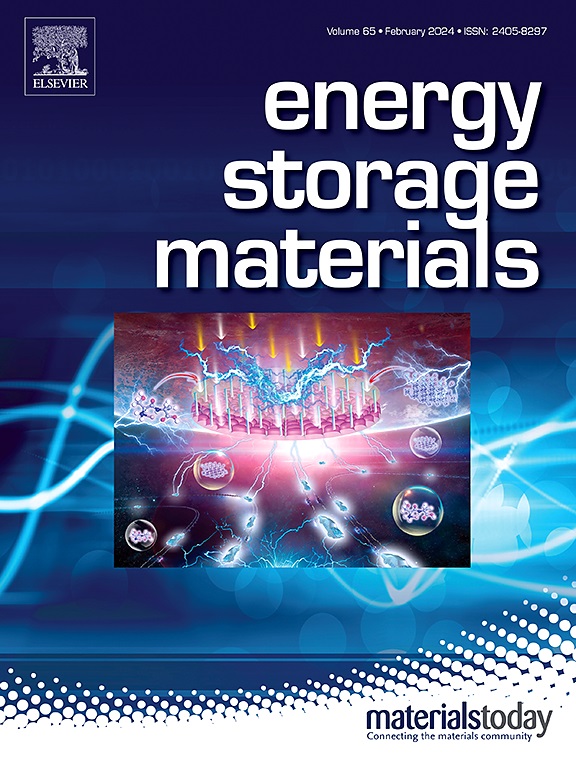Origin and suppression of structural degradation in Ni-rich layered oxide cathodes at elevated temperatures
IF 20.2
1区 材料科学
Q1 CHEMISTRY, PHYSICAL
引用次数: 0
Abstract
Ni-rich layered oxide cathode materials are at the forefront of advancements in long-range electric vehicles. However, these materials confront significant challenges related to structural destabilization during cycling, especially when operated at elevated temperatures. Here we explore the intricate relationship between operating temperature, lattice resilience, and Ni content in Ni-rich cathodes. Our investigation emphasizes the crucial role of lattice thermal expansion in causing structural degradation and capacity fading of cathodes at elevated temperatures. The results reveal that higher Ni content intensifies the vulnerability of cathode structures to thermal expansion, particularly within the Li slabs, thereby expediting oxygen loss and phase transitions. To address the challenges associated with thermal-induced structural degradation, we propose introducing lattice distortion by incorporating large-radius elements, for example Na and La, to enhance the structural robustness of cathodes. The electrochemical results demonstrate that this strategy enables a Co-free ultrahigh-Ni cathode, Li0.99Na0.01Ni0.98La0.02O2, with a high discharge capacity (227.9 mAh g−1 at 0.1 C and 25 °C) and outstanding cycling stability (78.9 % capacity retention after 500 cycles at 1 C and 50 °C in pouch cells). These findings offer feasible guidance for boosting the performance of layered oxide cathodes under harsh conditions.


高温下富镍层状氧化物阴极结构降解的起源和抑制
富镍层状氧化物正极材料是远程电动汽车发展的前沿。然而,这些材料在循环过程中面临着与结构不稳定相关的重大挑战,特别是在高温下操作时。本文探讨了富镍阴极中工作温度、晶格弹性和镍含量之间的复杂关系。我们的研究强调了晶格热膨胀在高温下引起阴极结构退化和容量衰退的关键作用。结果表明,较高的Ni含量增加了阴极结构对热膨胀的脆弱性,特别是在Li板内,从而加速了氧的损失和相变。为了解决与热致结构退化相关的挑战,我们建议通过加入大半径元素(例如Na和La)来引入晶格畸变,以增强阴极的结构稳健性。电化学结果表明,该策略可获得无co的超高镍阴极li0.99 na0.01 ni0.98 la0.020 o2,在0.1 C和25°C条件下具有较高的放电容量(227.9 mAh g - 1)和出色的循环稳定性(在1 C和50°C条件下循环500次后容量保持率为78.9%)。这些发现为提高层状氧化物阴极在恶劣条件下的性能提供了可行的指导。
本文章由计算机程序翻译,如有差异,请以英文原文为准。
求助全文
约1分钟内获得全文
求助全文
来源期刊

Energy Storage Materials
Materials Science-General Materials Science
CiteScore
33.00
自引率
5.90%
发文量
652
审稿时长
27 days
期刊介绍:
Energy Storage Materials is a global interdisciplinary journal dedicated to sharing scientific and technological advancements in materials and devices for advanced energy storage and related energy conversion, such as in metal-O2 batteries. The journal features comprehensive research articles, including full papers and short communications, as well as authoritative feature articles and reviews by leading experts in the field.
Energy Storage Materials covers a wide range of topics, including the synthesis, fabrication, structure, properties, performance, and technological applications of energy storage materials. Additionally, the journal explores strategies, policies, and developments in the field of energy storage materials and devices for sustainable energy.
Published papers are selected based on their scientific and technological significance, their ability to provide valuable new knowledge, and their relevance to the international research community.
 求助内容:
求助内容: 应助结果提醒方式:
应助结果提醒方式:


